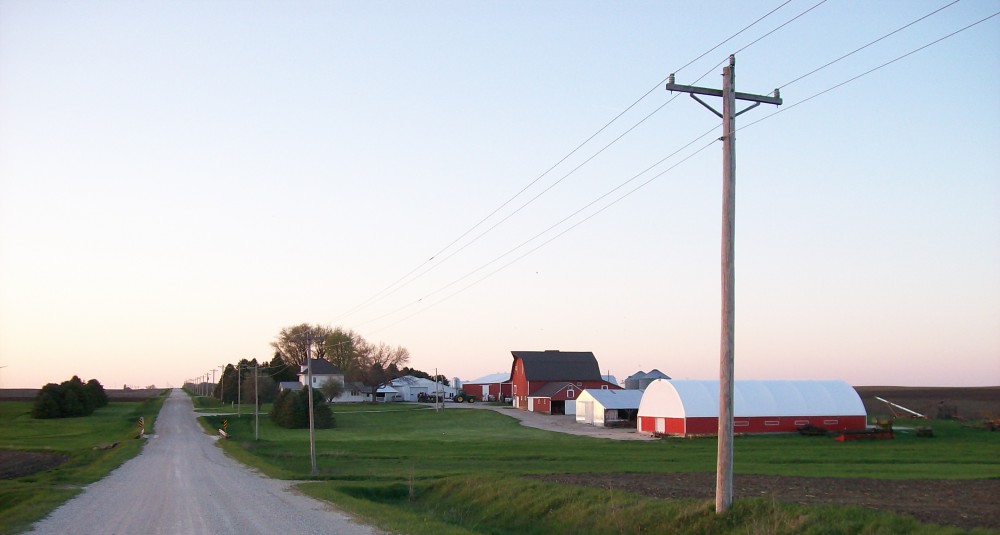Tuesday morning began early on the Kruse household. We were out in the barn seeing how the cows were milked and then helped feed the calves milk. After a quick breakfast, we began our trip to various farms with the help of the Kruse’s. Our first stop was at an Amish Farmstead, that had a food store, bakery, and dairy operation. Of all the farms we would visit that day this one had the biggest impression on me. I had seen how the Amish had lived when visiting my grandma in Pennsylvania, but now thinking about actually trying to run a farm or a business and following the religion seems so much work. The work they had to put in to plow a field or harvest it with just horsepower is mind-blowing. After the Amish, we headed to the Peake family farm, just like the Kruse’s they had a grass-fed dairy operation. Then we headed to the Welsh Family Organic farm to see their operation. They began growing organic crops before there was the certification because they saw what the pesticides did to the animals and wanted to try to keep them from going crazy due to the chemicals used on fields. On their farm, they raised organic livestock, like chicken, beef, and hogs. After seeing the tour most of their practices in raising livestock is not much different than conventional farming. For example, the cattle on the Sweeny farm are raised the exact same way until right before they are sold, when they are fed corn to fatten them up. Another thing that I found kind of interesting was how the manure was stored on the Welsh Farm. Unlike a CAFO, which has a storage tank underneath the barn, the Welsh Farm just has it all piled up right next to a stream. The reason this surprises me so much is that there a negative connotation when it comes to the conventional way to raise livestock when it is not much different than the way organic farmers raise their livestock.
The next morning as a group we made our way to Wisconsin to the Organic Valley Cooperative headquarters. We started in their distribution plant which was so cool see up close. The precision that the warehouse runs with all the different moving parts on is insane. After the tour of the warehouse, we made our way over to the building next door which was their headquarters. Inside we learned about the business side of Organic Valley. The building was pretty new, so it had many features that were eco-friendly such as the way they heat and cool their building and the materials they used for the ceiling or carpeting. They also tried to make their office building as conducive to collaboration with 90% of it being an open area to work and the other 10% is office space. They emphasized that they include a lot of amenities within the building to help build the community as well as retain employees. After lunch, we sat down and talked about the history of the company and how it grew to the size it is today. The biggest thing they pointed out was they work with their organic milk producers to set a price so they have a stable price throughout the year. We ended our trip to Organic Valley with a detour through Minnesota before returning to the place we were staying for the night.
FARM
Furman Students Investigate Ag Practices, Policies, and Politics in Iowa
